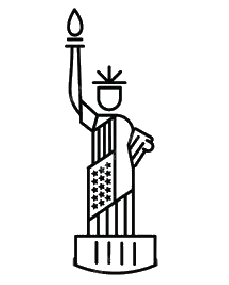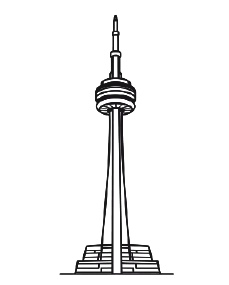Custom Healthcare Software Development: Trends, Benefits & the Role of Tech Teams


The healthcare industry has been undergoing a significant transformation in recent years, largely driven by advances in digital technology. With the rise of telemedicine, electronic health records (EHR), and mobile health applications, the way healthcare services are delivered is evolving rapidly. The COVID-19 pandemic further accelerated this change, highlighting the importance of adopting digital tools to ensure continuity of care, improve patient outcomes, and streamline administrative processes.
As the healthcare landscape becomes more digital, software solutions play a pivotal role in enhancing the quality of care while improving operational efficiency. According The global healthcare IT market size was estimated at USD 663.0 billion in 2023 and is expected to expand at a compound annual growth rate (CAGR) of 15.8% from 2024 to 2030.This growth underscores the growing demand for innovative healthcare software solutions that meet the needs of both patients and healthcare providers.

As healthcare organizations and startups look to capitalize on this digital transformation, it’s essential to understand the latest development trends, features, benefits, and costs associated with building healthcare software. In this blog, we will explore key trends, the must-have features in healthcare software, a breakdown of development costs, the development process, challenges and solutions, as well as how BizBrolly can help healthcare providers and tech startups create cutting-edge solutions that are both secure and user-friendly.
With a comprehensive understanding of these factors, healthcare organizations can stay ahead of the curve, providing enhanced care while driving operational efficiency through innovative software solutions.
Healthcare software comes in many forms, each designed to address specific needs within the healthcare ecosystem. These software solutions help streamline processes, ensure compliance, and enhance patient care. Below are some of the most prominent types of healthcare software currently shaping the industry:

EHR/EMR software is one of the most common and critical types of healthcare software. These systems store and manage patient data digitally, allowing healthcare providers to access patient histories, treatment plans, diagnostic results, and medication records. By replacing paper records, EHRs and EMRs ensure better data accuracy, faster information retrieval, and seamless communication between healthcare providers.
Telemedicine software facilitates remote consultations between healthcare providers and patients. These platforms became particularly important during the COVID-19 pandemic, allowing healthcare professionals to continue delivering care while minimizing in-person visits. Telemedicine solutions typically include video conferencing capabilities, patient scheduling, and secure communication tools.
Medical practice management software helps healthcare providers manage their practice’s daily operations, including appointment scheduling, billing, and patient communication. These systems are designed to increase efficiency, reduce administrative burden, and improve patient experiences.
Healthcare CRM software helps healthcare providers manage relationships with patients, improve communication, and streamline marketing efforts. It enables healthcare organizations to track patient interactions, improve engagement, and provide personalized care.
Mobile health apps empower patients to take control of their health and wellness. These apps include features like appointment scheduling, medication reminders, fitness tracking, and virtual consultations. mHealth apps are growing in popularity as patients increasingly rely on their smartphones for health management.
Healthcare billing software is used to manage patient billing, insurance claims, and payments. This software ensures that claims are processed accurately and quickly, reducing errors and improving revenue cycles. It also ensures compliance with various healthcare regulations and payer requirements.
When developing healthcare software, certain features are essential to ensure that the software meets industry standards, improves patient care, and enhances operational efficiency. These must-have features not only contribute to a seamless user experience but also ensure compliance with regulations, safeguard patient data, and facilitate smooth integration with other systems.
In healthcare, privacy and security of patient data are paramount. HIPAA (Health Insurance Portability and Accountability Act) in the United States and GDPR (General Data Protection Regulation) in Europe set strict standards for how personal health information should be handled, stored, and shared. Healthcare software must be designed with compliance in mind, ensuring that it meets these legal requirements to protect patient privacy.
Scheduling appointments efficiently is a critical component of healthcare management. Healthcare software should allow patients to book, reschedule, and cancel appointments online, reducing administrative work for healthcare providers and improving patient experience. Providers should be able to manage appointment slots and automate reminders to minimize no-shows.
Real-time notifications are essential for timely communication between healthcare providers and patients. These notifications can be used to inform patients about appointment reminders, prescription refills, lab results, and urgent care instructions. Additionally, healthcare staff can receive alerts about critical patient conditions, appointment updates, or administrative tasks.
Patient portals are online platforms where patients can access their medical information, schedule appointments, request prescription refills, and communicate securely with their healthcare providers. This feature empowers patients to manage their health more independently and fosters a stronger patient-provider relationship.

E-prescriptions allow healthcare providers to send prescriptions directly to pharmacies, reducing errors associated with handwritten prescriptions and improving prescription accuracy. This feature can also streamline the process by integrating directly with pharmacy systems, ensuring that prescriptions are filled promptly and accurately.
With the rise of telemedicine, video conferencing is a must-have feature in healthcare software. It allows healthcare providers to conduct remote consultations, which is particularly useful for non-emergency care, follow-ups, and mental health consultations. The video feature should be HIPAA-compliant and ensure secure, high-quality video interactions.
AI-driven chatbots are becoming an increasingly valuable feature in healthcare software. They can handle a variety of tasks such as appointment scheduling, answering frequently asked questions, providing health advice, and even helping with preliminary diagnosis based on symptoms. Chatbots can enhance patient engagement by offering immediate assistance outside regular office hours.
Healthcare software handles sensitive patient data, making robust cybersecurity measures essential. Software must use advanced encryption methods to protect data both during transmission and at rest. Additionally, access control protocols should be implemented to restrict access to authorized users only.
Implementing the right healthcare software solution can offer numerous benefits, both for healthcare providers and patients. The digitalization of healthcare processes has not only streamlined administrative tasks but also improved patient outcomes, reduced costs, and enhanced overall operational efficiency. Below are some of the key benefits of adopting healthcare software:

One of the most significant benefits of healthcare software is its ability to enhance the quality of care provided to patients. By offering centralized access to patient data, healthcare professionals can make better-informed decisions, provide more accurate diagnoses, and tailor treatment plans to individual needs. Features such as EHR/EMR systems, patient portals, and telemedicine platforms enable timely communication and more personalized care.
Healthcare software helps streamline a variety of operational tasks that traditionally required manual input. From appointment scheduling to billing and insurance claims management, automation can significantly reduce administrative burdens. As a result, healthcare providers can focus more on patient care and less on administrative work, leading to improved productivity and efficiency.
The importance of patient data privacy cannot be overstated in the healthcare industry. Healthcare software must comply with standards like HIPAA in the U.S. or GDPR in Europe to protect sensitive patient data. By using advanced encryption, secure storage solutions, and access controls, healthcare software ensures that patient data remains confidential and protected from unauthorized access.
Healthcare providers often need to collaborate with other specialists, labs, or pharmacies to provide comprehensive care. Healthcare software facilitates seamless communication between multiple stakeholders, allowing for faster decision-making and more coordinated patient care. Telemedicine, secure messaging, and integrated EHR systems allow real-time communication and collaboration across different departments or even healthcare organizations
By automating manual tasks and reducing administrative overhead, healthcare software can lead to substantial cost savings. Additionally, paperless billing, electronic prescriptions, and automated insurance claim submissions can cut down on errors, delays, and the need for physical resources, such as paper or file cabinets. In the long term, healthcare software helps providers deliver services more efficiently and at a lower cost.
Patient engagement is a key factor in improving health outcomes. Healthcare software, particularly through patient portals and mobile health apps, allows patients to actively participate in their care. By enabling patients to schedule appointments, view lab results, communicate with their providers, and track their health progress, healthcare software fosters a more engaged and informed patient population.
Advanced reporting and analytics features within healthcare software allow healthcare providers to generate insights from vast amounts of data. This can help identify trends in patient care, track clinical performance, and make more informed decisions about treatment approaches. For example, predictive analytics can be used to anticipate patient needs or identify high-risk individuals who require more proactive care.
The cost of developing healthcare software can vary significantly based on the type of software, complexity, features, and development time. Below is a general breakdown of development costs for different healthcare software solutions:

Developing healthcare software comes with its own set of challenges, given the sensitive nature of the data, the need for regulatory compliance, and the complexity of healthcare systems. Below are some of the most common challenges in healthcare software development and the solutions to overcome them:
Healthcare software deals with highly sensitive patient data, including personal health information (PHI). Ensuring that this data is protected from breaches and unauthorized access is a significant challenge. Healthcare organizations must comply with strict regulations, such as HIPAA in the U.S. and GDPR in Europe, which require robust security measures.
Implement strong encryption, data anonymization techniques, and secure access control to ensure the safety of patient data. Regular security audits, vulnerability assessments, and the use of multi-factor authentication (MFA) can further bolster security. Ensuring compliance with global standards is also crucial to avoid legal repercussions.
Healthcare software must adhere to a variety of complex regulations, which can vary by region. These regulations often change, and staying up to date can be a challenge for development teams. Non-compliance with regulations like HIPAA, GDPR, and FDA guidelines can lead to severe fines and reputational damage.
To ensure compliance, development teams should work closely with legal and compliance experts throughout the design and development stages. Additionally, using compliance frameworks and integrating built-in compliance tools can make it easier to adhere to ever-changing regulations.
Many healthcare organizations still use legacy systems, such as old EHRs and billing platforms, which may not be compatible with modern software. Integrating new healthcare software with these legacy systems can be difficult and time-consuming, often requiring custom solutions.
Using middleware or building custom APIs for seamless integration can address compatibility issues. It’s important to ensure that new software can communicate with older systems without disrupting ongoing operations. Collaboration with the IT teams of healthcare organizations is essential for successful integration.
Healthcare software development can be expensive, particularly when it involves advanced features like AI, machine learning, or integration with external devices. Furthermore, maintenance and updates are crucial to ensure software remains functional, secure, and compliant, adding to the ongoing cost burden.
Adopting an Agile development methodology can help break the project into manageable parts and reduce upfront costs. Additionally, selecting cloud-based solutions can minimize infrastructure costs and improve scalability. Healthcare software providers should also consider long-term maintenance contracts to ensure cost predictability.
Even if the healthcare software is well-designed and functional, it can still face resistance from end-users such as doctors, nurses, and administrative staff. Proper training and a user-friendly interface are critical for successful adoption, especially in a busy healthcare environment where professionals may not be tech-savvy.
Invest in comprehensive training programs and user-friendly interfaces. Provide clear documentation, tutorials, and 24/7 support to help users get up to speed. Additionally, conducting user acceptance testing (UAT) with real healthcare professionals can help identify potential usability issues before deployment.
The healthcare industry is undergoing a digital transformation, and several emerging trends in software development are shaping the future of healthcare delivery. These trends not only improve the efficiency and quality of care but also make healthcare software more secure, scalable, and user-friendly. Below are some of the most significant development trends in healthcare software:

Artificial intelligence (AI) and machine learning (ML) are increasingly being integrated into healthcare software to help automate tasks, enhance decision-making, and improve patient care. AI-powered algorithms can analyze large datasets to detect patterns, predict patient outcomes, and assist in diagnosing conditions.
Predictive Analytics: AI can help healthcare providers predict patient conditions before they become critical, allowing for preventive measures.
Personalized Treatment: ML algorithms can tailor treatment plans based on individual patient data and historical trends.
Automated Workflow: AI can automate administrative tasks like scheduling, billing, and data entry, allowing healthcare professionals to focus on patient care.
Telemedicine has gained significant traction, particularly in the wake of the COVID-19 pandemic. Software that enables virtual consultations, remote diagnostics, and patient monitoring is becoming essential in healthcare. This trend is expected to continue to grow as healthcare providers focus on offering more accessible care options.
Virtual Consultations: Patients can consult doctors from the comfort of their homes, reducing the burden on physical healthcare facilities.
Remote Monitoring: IoT devices and mobile apps can track patient vitals and chronic conditions, sending data to healthcare providers for real-time analysis.
Increased Access to Care: Telemedicine reduces geographical barriers and makes healthcare accessible to people in remote or underserved areas.
Blockchain technology is gaining popularity in healthcare software development due to its potential to enhance data security, transparency, and interoperability. Blockchain ensures that sensitive healthcare data is tamper-proof and accessible only to authorized individuals.
Data Security: Blockchain ensures that patient records are encrypted and protected from unauthorized access or data breaches.
Interoperability: Blockchain can provide a unified and decentralized platform for data sharing between different healthcare providers, improving coordination and patient care.
Transparency: Blockchain provides an immutable audit trail, increasing accountability in healthcare transactions.
Cloud-based healthcare software and Software-as-a-Service (SaaS) solutions are revolutionizing the way healthcare organizations store, access, and manage data. Cloud platforms provide scalability, flexibility, and cost efficiency, making them ideal for healthcare providers looking to modernize their IT infrastructure.
Scalability: Cloud platforms allow healthcare software to scale easily based on demand, reducing the need for expensive on-premise infrastructure.
Remote Access: Healthcare providers can access patient data from anywhere, facilitating remote care and collaboration.
Cost Efficiency: SaaS solutions reduce the need for hefty upfront investments in infrastructure, making them more affordable for small and medium-sized healthcare organizations.
The use of IoT devices in healthcare has expanded significantly, allowing real-time monitoring of patient health data. From wearables that track vital signs to connected medical devices, IoT in healthcare is improving the accuracy of diagnoses and enabling proactive patient care.
Real-Time Monitoring: IoT devices continuously collect data on patient health, enabling healthcare professionals to track conditions in real time.
Chronic Disease Management: IoT devices are particularly useful for managing chronic diseases like diabetes, hypertension, and heart disease, providing continuous monitoring outside of the clinic.
Improved Patient Outcomes: By capturing data 24/7, IoT devices help in the early detection of health issues, leading to timely interventions and better health outcomes.
Augmented Reality (AR) and Virtual Reality (VR) are becoming increasingly popular for training healthcare professionals and for simulating medical procedures. These technologies provide immersive, hands-on experiences without the risk of real-world consequences.
Medical Training: VR allows medical students and professionals to practice surgeries and procedures in a simulated environment, improving their skills without the risk of harming patients.
Patient Education: AR and VR can be used to educate patients about their conditions and treatment options, providing a more interactive and engaging experience.
Remote Assistance: AR can assist doctors in real-time during surgeries by overlaying important information onto their field of vision, improving precision.
8. Big Data and Predictive Analytics
Big Data and predictive analytics are transforming healthcare software by enabling healthcare providers to analyze vast amounts of data and make data-driven decisions. Predictive analytics uses historical data to forecast patient outcomes, optimize hospital operations, and improve treatment plans.
Personalized Medicine: Predictive models can be used to tailor treatments to individual patients based on their genetic makeup and medical history.
Operational Efficiency: Big Data analytics helps healthcare organizations optimize resource allocation, reduce wait times, and improve the efficiency of clinical workflows.
Improved Patient Outcomes: By leveraging predictive analytics, healthcare providers can intervene earlier and provide more accurate diagnoses and treatment plans.
The healthcare software industry is evolving rapidly, driven by technological advancements and the need for more efficient, secure, and user-friendly systems. With the market projected to grow significantly in the coming years, it is crucial for healthcare organizations to stay ahead of the curve by adopting modern software solutions that enhance patient care, streamline operations, and ensure compliance with stringent regulations.
While there are several challenges involved in healthcare software development—such as data privacy, integration with legacy systems, and maintaining regulatory compliance—the benefits far outweigh the difficulties. By focusing on key features like security, user experience, scalability, and compliance, healthcare software can improve efficiency, reduce errors, and provide better outcomes for both healthcare providers and patients.
BizBrolly Solutions is committed to helping healthcare organizations navigate the complexities of software development, offering tailored solutions that address unique needs and challenges. Whether you’re looking to develop an EHR system, telemedicine platform, or patient management software, BizBrolly provides the expertise and support you need to succeed.
Contact BizBrolly Solutions today to discuss how we can help you build secure, scalable, and compliant healthcare software solutions. Our team of experts will guide you through every step of the development process—from concept to deployment—ensuring that your software meets both your operational needs and regulatory requirements.
Let’s build the future of healthcare together!

In recent years, artificial intelligence (AI) has rapidly advanced, with neural ...
Explore more
Cloud computing is transforming the manufacturing industry by making it easier t...
Explore more


D-23, Sector 63, Noida,
UP - 201307

141 Westgate Dr, Edison,
NJ - 08820

4 Black lion court, Mill road, Kent, UK – ME71HL

2207, 2220 Lakeshore Blvd W, Toronto ON- M8V0C1

94A Central Road, Jacanlee, Johannesburg 2194